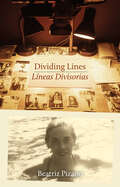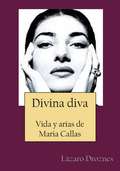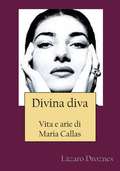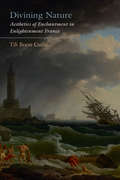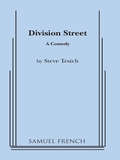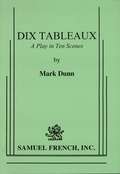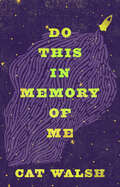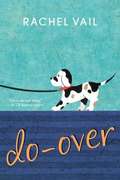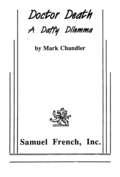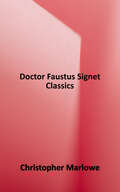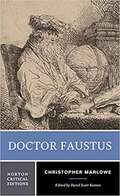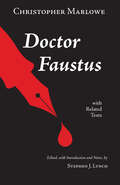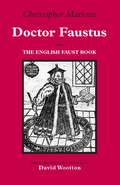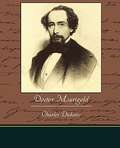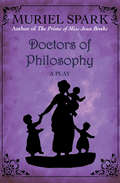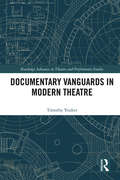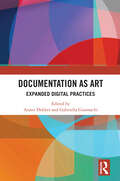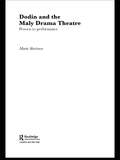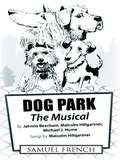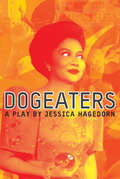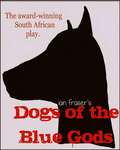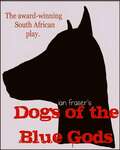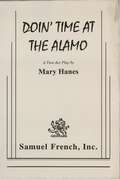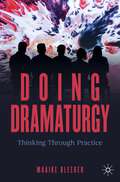- Table View
- List View
Dividing Lines | Líneas Divisorias
by Beatriz PizanoThe one thing everyone knows is that we’re all going to die. Which means our loved ones are going to die. So how can we prepare for, experience, and honour their deaths? And does that look different if we have to make the decision to end their lives for them if they’re suffering? Dividing Lines | Líneas Divisorias is one woman’s story that offers a space for communal grieving through a celebration of life. Traced by the historic world events that coincide with her memories of independence and immigration, Beatriz reflects on how she spent over a decade caring for her mother—the one person she promised she’d be there for all the way until the end—as she lost her more and more to Alzheimer’s, and ultimately had to make the tough call to end her mother’s pain. A meditation full of light that doesn’t shy away from fear of the unknown, Beatriz’s narrative comes from a vulnerable and recognizable place of love that will invite our memories and choices in to heal.
Divina Diva: Vida y arias de María Callas
by Lazaro DroznesMaría Callas provavelmente foi a soprano mais importante de ‘’bel canto’’. Sua vida, cheia de altos e baixo, só é comparável a vida das heroínas trágicas que costumavam representar no palco. Sua carreira superou os limites do teatro lírico para se tornar uma diva que atraiu o interesse de multidões e se tornou uma estrela do alta classe internacional.
Divina Diva: Vita E Arie Di Maria Callas
by Lázaro Droznes Anna ZollinoMaria Callas probabilmente è stata il soprano più importante del "bel canto". La sua vita, piena di vette e abissi, è paragonabile solo alla vita delle eroine tragiche che era solita portare in scena.La sua carriera ha nettamente superato i limiti del teatro lirico, diventando una diva capace di attirare l'interesse della massa e di trasformarsi in una stella del "jet set" internazionale.L'opera, narrata in prima persona dalla Diva, racconta i principali momenti della sua vita turbolenta, alternando con le sue famose arie che illustrano e anticipano il suo tragico destino.Traduzione Anna Zollino
Divining Nature: Aesthetics of Enchantment in Enlightenment France
by Tili Boon CuilléThe Enlightenment remains widely associated with the rise of scientific progress and the loss of religious faith, a dual tendency that is thought to have contributed to the disenchantment of the world. In her wide-ranging and richly illustrated book, Tili Boon Cuillé questions the accuracy of this narrative by investigating the fate of the marvelous in the age of reason. Exploring the affinities between the natural sciences and the fine arts, Cuillé examines the representation of natural phenomena—whether harmonious or discordant—in natural history, painting, opera, and the novel from Buffon and Rameau to Ossian and Staël. She demonstrates that philosophical, artistic, and emotional responses to the "spectacle of nature" in eighteenth-century France included wonder, enthusiasm, melancholy, and the "sentiment of divinity." These "passions of the soul," traditionally associated with religion and considered antithetical to enlightenment, were linked to the faculties of reason, imagination, and memory that structured Diderot's Encyclopédie and to contemporary theorizations of the sublime. As Cuillé reveals, the marvelous was not eradicated but instead preserved through the establishment and reform of major French cultural institutions dedicated to science, art, religion, and folklore that were designed to inform, enchant, and persuade. This book has been made possible in part by the National Endowment for the Humanities: Exploring the human endeavor.
Division Street
by Steve TesichFull Length, Comedy \ 2 Ints., 1 Ext. \ 6 m, 2 f \ Chris, a burnt out sixties radical, has settled in Chicago seeking obscurity as an insurance underwriter. He wants to forget his activist past, but is besieged by old cronies and unwanted new ones: a former Black militant, now a transexual city cop; his loopy ex-wife who speaks only the words of rock song cliches; a bomb wielding Serbian restauranteur; a former partner in radicalism who now rails agianst the "women's movement"; a prostitute who espouses the virtues of promiscuity, and his African American-Polish landlady. \ "Steve Tesich has not only found a great subject, but he has also found the courage to tackle it in a daring, mischievous way."-The New York Times
Dix Tableaux
by Mark DunnComedy / 3f and m/f ensemble or flexible number / Interior / The story of friendship between two women in their sixties is played out over the course of ten years, each year representing another reunion for Beverly Duggins and Addie Spools, two participants in a series of annual "tableaux" sponsored by the Museum of Dix, in a small city in the South. Within human diorama settings as simple as a frontier cabin porch or the cow stall of a local dairy barn, and as elaborate as the "Spit and Curl" beauty salon (circa 1930) and the front seat of Thelma and Louise's plummeting convertible, Beverly, the lonely urban professional, and Addie, the down-home pharmacist's assistant, chart the course of each other's lives, while fending off incursions from the officiously bothersome fellow-poser Maureen. Through the ten scenes which comprise the play, the two women are forced to endure the constant in terruptions of the museum "promenaders" who "ooh" and "ah" at the lifelike presentations, offering up their comical comments, both kind and cruel. Though they see one another only one weekend a year, and in spite of their very different backgrounds, Beverly and Addie nurture a growing and abiding friendship. In the end, it becomes the strongest and most sustaining friendship of their lives.
Do American Dream De Sofia E Outras Coisas
by Ronyfer Anabela Alves Lopes Afonso Romão PintoUma jovem mulher guatemalteca à procura de um sonho inexistente, anos depois regressa a casa arrastando o pior dos pesadelos.
Do This In Memory of Me
by Cat WalshTwelve-year-old Genevieve has been having a hard time at home, and all she really wants is to be an altar server at her church. Except it’s 1963 and Father Paul tells her that’s not allowed. After having her dreams crushed and being made fun of by her classmate and star altar boy Martin, Genevieve prays to God hoping for an exception. Instead, a fourteen-year-old martyr from the fourth century, St. Pancras, appears and promises to get her an answer from God. But with her mom missing for weeks and Martin disappearing on his way home from school the next day, she fears her prayers have been answered in dire ways. This dark comedy dives into the expansive time between childhood and adolescence, exploring questions about the realities of home life to the possibilities of unknown worlds. Do This In Memory of Me is for anyone who has ever questioned the relationship between faith and trust or wondered where they fit in the bigger picture.
Do-Over
by Rachel VailVail's most lauded book to date, "Do-Over" is the story of 13-year-old Whitman, who has to deal with the anger he feels towards his father when his parents separate, his own interest in several girls, and the heady feeling of acting in his first play.
Doctor Death
by Mark ChandlerThriller Farce / The author of I Shot My Rich Aunt sets this merry murder on a yacht in the French Riviera. The guests on board discover they are marked for a madman's murderous vengeance when Old Maid cards on which each is named and nastily described arrive. Can the malevolent mastermind be Linda Luscious, Victor Valor, bartender Margarita Martini, steward Queenie Quill, TV hostess Wendy Windy, shy secretary Portia Peck, sleazy Ritchy Raunchy, private eye Harry Hulk, math expert Sibyl Service, wrestler Minnie Mountain, actress Fanny Flop, or aerobics advocate Jillian Jogger? Time is short on the slowly sinking yacht. Can they unmask the fiend? Can they get off the doomed ship? Thrill follows chill in this madcap melodrama of hideous revenge.
Doctor Faustus
by Christopher MarloweThe classic Elizabethan play, with new material From the Elizabethan period's second-biggest dramatist comes the story of Faustus, a brilliant scholar who sells his soul to the devil in exchange for limitless knowledge and powerful black magic.
Doctor Faustus (Norton Critical Editions)
by Christopher Marlowe David Scott KastanThis edition provides newly edited texts of both the 1604 (A-Text) and 1616 (B-Text) versions of the play, each with detailed explanatory annotations. "Sources and Contexts" includes a generous selection from Marlowe’s main source, The Damnable Life and Deserved Death of Dr. John Faustus, along with contemporary writings on magic and religion (including texts by Agrippa, Calvin, and Perkins) that establish the play’s intellectual background. This volume also reprints early documents relating to the writing and publication of the play and to its first performances, along with contemporary comments on Marlowe’s scandalous reputation. Twenty-five carefully chosen interpretations―written from the eighteenth century to the present―allow students to enrich their critical understanding of the play. These diverse critical essays include classic analyses by Charles Lamb, William Hazlitt, and A. C. Swinburne, among others, and recent criticism from, among others, Michael Neill, Katharine Eisaman Maus, Alison Findlay, Stephen Orgel, and David Bevington. A Chronology and Selected Bibliography are also included.
Doctor Faustus: With Related Texts
by Christopher MarloweThis new edition of Christopher Marlowe&’s Doctor Faustus offers the complete 1604 A-text with embedded selections from the 1616 B-text. Its innovative format will make it easier for readers to note differences between these texts and to consider what is gained and lost in viewing them both separately and together. A full Introduction to the play, notes, and a rich selection of related texts further enhance the value of this edition to students of Renaissance drama, Reformation theology, magic, and occult philosophy.
Doctor Faustus: With The English Faust Book
by Christopher Marlowe David WoottonThis edition of Doctor Faustus features annotated versions, with modernized spelling and punctuation, of the 1604 A-text and the 1592 text of Marlowe's source, the English Faust Book--a translation of the best-selling Historia von Johann Fausten published in Frankfurt in 1587, which recounts the strange story of Doctor John Faustus and his pact with the spirit Mephistopheles.David Wootton's Introduction charts Marlowe's brief, meteoric career; the delicate social and political climate in which Doctor Faustus was staged and the vexed question of the religious sensibilities to which it may have catered; the interpretive significance of variations between the A and B texts; and the shrewd and subversive uses to which Marlowe put the English Faust Book in crafting, according to Wootton, a drama in which orthodox Christian teaching triumphed, but in which Faustus has all the best lines.
Doctor Marigold
by Charles DickensOriginally published in 1865, Dr. Marigold was extremely successful, as were Dickens's public performances of a play based on the story - fascinating and easy to read. Doctor (it is his given name) Marigold is a "Cheap Jack" or what we would call a street peddler. Doctor Marigold's fortunes reverse when he adopts a deaf and mute girl whose mother is dead and whose stepfather, owner of a traveling circus, beats her. Dr Marigold recalls an overwhelming passion across two cultures - hearing and deaf.
Doctors of Philosophy: A Play
by Muriel SparkThe only play by famed Scottish author Muriel Spark takes on the dilemmas of two intellectually ambitious women in 1960s EnglandIn a home overlooking London’s Regent’s Canal in the 1960s, two scholars debate the choices they have made with their lives. Catherine Delfont was one of the most promising minds of her generation, but after earning her PhD she gave up her research to marry a well-regarded economist and raise a family. Her cousin Leonora stayed in academia and became a successful classicist, able to observe both the breadth of history and the lives of others with brilliant, cool detachment. Together, they face the sacrifices they have made as women and intellectuals. First performed in London in 1962 and later in Scandinavia, where it was produced by Ingmar Bergman, Doctors of Philosophy is a fascinating artifact of early second-wave feminism. This ebook features an illustrated biography of Muriel Spark including rare photos and never-before-seen documents from the author’s archive at the National Library of Scotland.
Documentary Vanguards in Modern Theatre (Routledge Advances in Theatre & Performance Studies)
by Timothy YoukerPractitioners and critics alike often attribute great authenticity to documentary theatre, casting it as a salutary alternative not only to corporate news outlets and official histories but also to the supposed "self-indulgence" and "elitism" of avant-garde theatre. Documentary Vanguards in Modern Theatre, by contrast, argues for treating documentarians as vanguardists who (for good or ill) push, remap, or transgress the margins of historical and political visibility, often taking issue with professional discourses that claim a monopoly on authoritative representations of the real. This is the first book to situate documentary theatre’s development within the larger story of theatrical experimentalism, collage art, collective ritual, and other avant-garde dramaturgical and performance practices of the late 19th and 20th Centuries.
Documentation as Art: Expanded Digital Practices
by Gabriella Giannachi Annet DekkerDocumentation as Art presents documentation as an expanded practice that is radically changing the ways in which to look at, participate in, and generate art. Bringing together expertise from different disciplines, the book provides an in-depth investigation of the development of documentation as a set of production, circulation, and preservation strategies. Illustrating how these are often led by artists, audiences, and museums, the contributions offer new insights into digital art and its history, curation, and preservation, through documentation. Considering documentation as the main method of preserving these art forms, the book analyses how it can address the inherent challenges of capturing live events, visitor experiences, and evolving artworks. Showing how documentation itself can become (part of) an original artwork, the book discusses ways in which these expanded practices can impact the value and experience of the documented event or artwork, giving consideration to how this might affect the traditional authority of the museum as creator of documentation used for future reference, historical relevance, or cultural memory. Documentation as Art demonstrates how the curation and preservation of documentation and the introduction of audience-generated documentation are radically changing exhibition and visiting practices in which documentation is becoming a significant and emergent cultural form in its own right. The book will appeal to researchers and students engaged in the study of museums and curation, art and art history, performance, new media and digital art, library and information science, and conservation.
Dodin and the Maly Drama Theatre: Process to Performance
by Maria ShevstovaIncluding a foreword by Simon Callow, a dedicated admirer of the Maly, Dodin and the Maly Drama Theatre provides both a valuable methodological model for actor training and a unique insight into the journeys taken from studio to stage. This is the first ever full-length study of internationally-acclaimed theatre company, the Maly Drama Theatre of St. Petersburg, and its director, Lev Dodin.Maria Shevtsova provides an illuminating insight into Dodin's directorial processes and the company's actor 4raining, devising and rehearsal methods, which she interweaves with detailed analysis of the Maly's main productions. Dodin and the Maly Drama Theatre: Process to Performance demonstrates how the impact of Dodin's work extends far beyond that of his native Russia, and gives the reader unparalleled access to the company's practice.
Dog Park: The Musical
by Jahnna BeechamComedy / 3m, 1f / Simple set /Follow Daisy the sassy Westie through her dating adventures with Itchy, Champ and Bogie at the hippest, hottest place in town: Central Bark, where every dog has his day, and love conquers all. Daisy has promised her BFF (Best Friend Forever) she'd give the dating scene one more chance. She meets Champ the Collie, a charming but full of himself show dog; Itchy, a "humperactive" Jack Russell terrier; and Bogie, the darkly mysterious Lab/mutt who sticks his neck out for no one. This unusual quartet make their way through the day's scheduled events which include Singles With Friends, Agility Class, Speed Mating, Yappy Hour and Lovers with Leashes, which is when they pair up and leave the park. Daisy comes to the conclusion that Champ only has eyes for himself, Itchy can only be a friend, and Bogie is the dog for her. But when Daisy makes her desires known to Bogie, she gets a rude awakening; we learn that Bogie, a stray, has been living at the Dogpark for six months. Bogie confesses his love for Daisy just as Animal Control arrives to take him away. Will Bogie and Daisy ever be reunited? Fresh off its sold-out run at Milwaukee Rep comes Dogpark: The Musical, created by the team behind the hit Chaps! and Chaps! A Jingle Jangle Christmas!
Dogeaters
by Jessica HagedornJessica Hagedorn has transformed her bestselling novel about the Philippines during the reign of Ferdinand and Imelda Marcos into an equally powerful theatrical piece that is a multi-layered tour de force. As Harold Bloom writes, "Hagedorn expresses the conflicts experienced by Asian immigrants caught between cultures . . . she takes aim at racism in the U.S. and develops in her dramas the themes of displacement and the search for belonging."Jessica Hagedorn is a performance artist, poet, novelist and playwright, born and raised in the Philippines. Her novels include Dogeaters (Penguin 1990) which was nominated for a National Book Award and The Gangster of Love (Penguin 1996); a short story collection, Danger and Beauty (City Lights 2002).
Dogs of the Blue Gods
by Silvia Niro Ian Fraser*Vincitore del 1989/90 Tonight/AA Life Vita Award for Comedy in Theatre* Pick of the Fringe Award, Grahamstown Arts Festival. Sudfrica. Primo classificato 1999 Wisconsin State AACTFest. USA. Uno spettacolo teatrale vincitore del premio sudafricano, scritto al culmine dell'Apartheid. L'opera si svolge in una struttura di addestramento per cani poliziotti. Gli stessi personaggi sono cani - interpretati da attori che camminano a quattro zampe. La storia si sviluppa rivelando le silenziose dinamiche interne ad un gruppo di cani molto scontrosi e piuttosto depressi che cominciano a chiedersi qual è il loro obiettivo nella vita. L'insoddisfazione repressa dell'esistenza dei cani emerge con l'arrivo di Rex, un civile cane domestico con idee radicalmente diverse Un Godot di cani ha inizio nel canile...
Dogs of the Blue Gods: La pièce sud-africaine aux nombreuses récompenses
by Ian FraserDogs of the Blue Gods est la pièce sud-africaine aux multiples récompenses, écrite au plus fort de l'Apartheid. L'histoire se déroule dans un centre d'entraînement cynophile de la police. Les personnages eux-mêmes sont des chiens qui évoluent sur scène à quatre pattes. La pièce commence au moment où on découvre une bande de chiens amorphes, complètement désabusés et quelque peu dépressifs qui commencent à s'interroger sur le sens de leur vie jusqu'à l'arrivée de Rex, un chien domestiqué, issu du monde civil et aux idées radicalement opposées.
Doin' Time at the Alamo
by Mary HanesComedy / 2m, 5f / Interior, Exterior / It's a hot July weekend at The Alamo, a woebegone motel that is directly across the street from a federal penitentiary in Texas. In this warm comedy, seven lonely, wise cracking characters "do time" between visits with loved ones in prison. They play cards, argue, order out for moo shu shrimp, plan a wedding and dream of love. At The Alamo, these prisoners of love take a final stand against loneliness and ultimately find freedom. Characters include the motel owner who has been unable to escape from The Alamo since his father died in prison, a tough talking New Yorker engaged to a two timing mobster, her reluctant bodyguard, the dental hygienist who loves the bodyguard, her mother a devotee of the card game rummy, a seventy year old woman who believes in numerology and the letters of the twenty year old prisoner she plans to marry this July 4th weekend, and a wife whose yuppie husband has lied to the Feds and to her.
Doing Dramaturgy: Thinking Through Practice (New Dramaturgies)
by Maaike BleekerThis book explores how doing dramaturgy is informed by today’s highly diverse field of theatre, dance and performance. It does so in dialogue with fourteen performances and their makers, tracing the thinking-through-practice that underlies these creations. The first part of the book looks at how dramaturgs participate in practices of thinking-making and introduces a dramaturgical mode of looking at performances and the processes in which they are created. The second part of the book discusses the performances and creative processes of Manuela Infante, Julian Hetzel, Ivo van Hove, Anouk van Dijk, Falk Richter, Milo Rau, Kris Verdonck, Death Centre, Hotel Modern, Jr.cE.sA.r , Emio Greco and Pieter C. Scholten, Dries Verhoeven, the LGB Society of Mind, Sanja Mitrović, and Amanda Piña. Showing how ways of making and ways of doing dramaturgy mutually inform each other, this book is an essential resource for students and others aspiring to develop their own dramaturgical practice.
